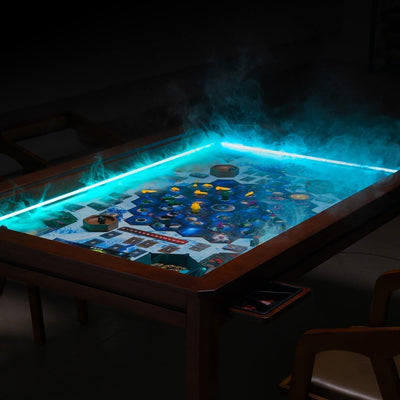Game Review: Secret Hitler
Secret identity games have long been a staple of party nights, but few have managed to blend tension, politics, and pure fun as seamlessly as Secret Hitler. This masterpiece brings the political turmoil of the twentieth century into a thrilling, modern tabletop experience that keeps every player guessing.
Blog Contents
Introduction
Years ago, I used to volunteer at a youth club, and one of the most popular activities was a game called werewolf. The objective of the game is for the werewolves to eradicate the villagers at night, and for the villagers to identify and execute the werewolves during the day. I've since heard the game being referred to as "mafia" as well, with a similar premise, and then before I knew it, secret identity team strategy games were popping up everywhere! The greatest of these, for my time and money, is Secret Hitler...
Premise & Roles
Some research into games like werewolf revealed that it was a means of demonstrating how extremist ideologies take root and overtake the governments of otherwise democratic nations. Secret Hitler is the best display of this fact, and rather than cartoonifying the notion with gangsters or mythical beasts, you're straight up dealing with political policies, underhanded tactics, and subversion to see your team come out on top.
The premise of the game is simple: the fascists are trying to get Hitler into a position of power, and the liberals are trying to kill him. Everybody adopts a role in secret before the game starts by drawing an envelope containing their secret role card, their party membership card, and their voting cards. It's imperative that the former two remain hidden throughout the game, but it helps to have somewhere to put your voting cards, like a card holder. Every player will either be a fascist or a liberal, but only one player will be Hitler.
How a Round Flows
The game plays out quickly, with the role of president going around the table and the president choosing a chancellor, which the players then vote in favour of or against. Once the power duo is chosen, the chancellor draws three policy tiles to present to the president, who plays them on the appropriate policy board. The trick of the game, and where alliances either strengthen or crumble, is convincing everyone at the table that your choice was not a strategic one. Fascists obviously want to get fascist policies down on the board, but there's every possibility that they'll draw three fascist policies, be forced to play one, and then play like they haven't just been given a golden opportunity to the rest of the table! Fingers very quickly end up being pointed at everyone as the seeds of distrust and doubt are sewn with every round played.
Table Vibes & Strategy
I've played Secret Hitler a number of times with family and friends and always had a blast. The vibe at the table can be raucous fun one minute, then deathly silent the next as the tide of the political struggle turns against the good guys. It's the kind of game where your own paranoia, whether a fascist or a liberal or Hitler, produces half the fun. You have to play it smart regardless of what side of the aisle you're on, because one false move or overconfident play could lead to all the wrong eyes being on you, and then your master plan is kaput!

Accessories & Setup
Secret Hitler is perfect for adult family gatherings or casual game nights with friends. I can attest that the consumption of alcoholic beverages adds a layer of hilarity to the proceedings so maybe a few cup holders would come in handy to prevent any damage to the game's bits and pieces. Obviously there'd be nothing stopping you from playing this on the floor (I once played on a ferry to the Aran Islands) but a table's always going to provide the best and most comfortable experience, especially one that's dedicated to providing a unique gaming experience.
Conclusion
Secret Hitler is the pinnacle of its genre, bringing the politics of the twentieth century into the modern era in a way that's fun and engaging, rather than dystopian and nightmarish.
By Ciarán Laverty





